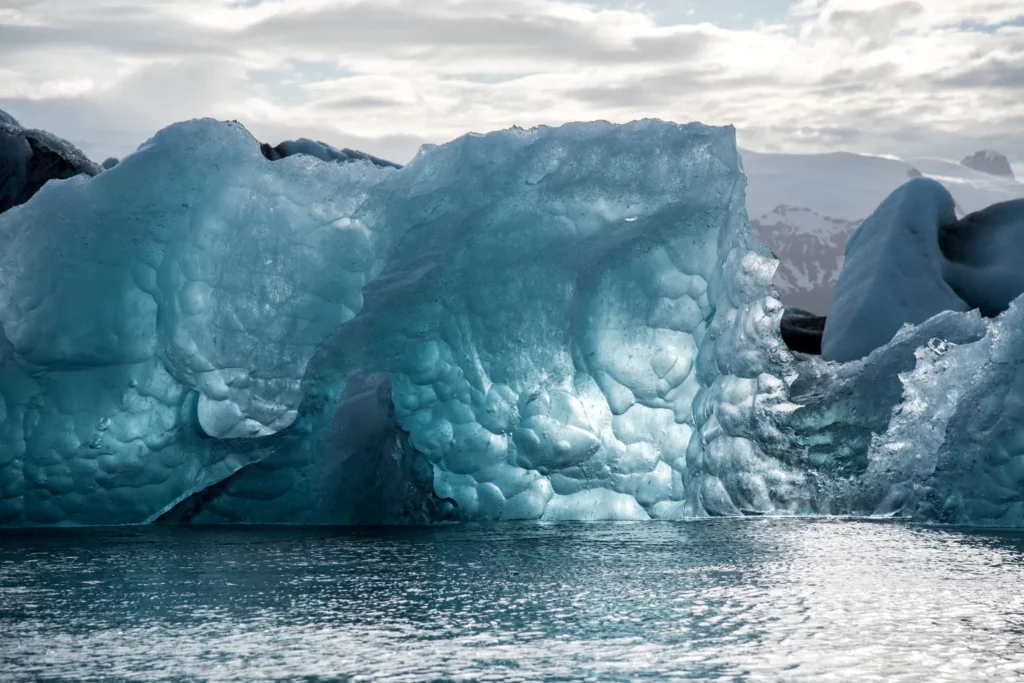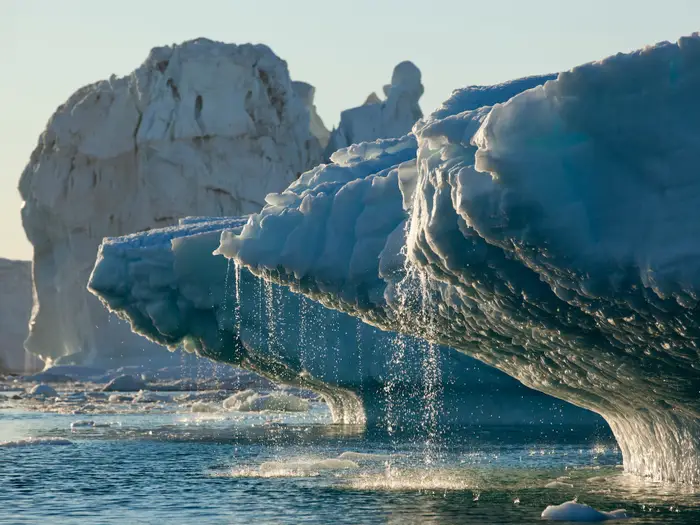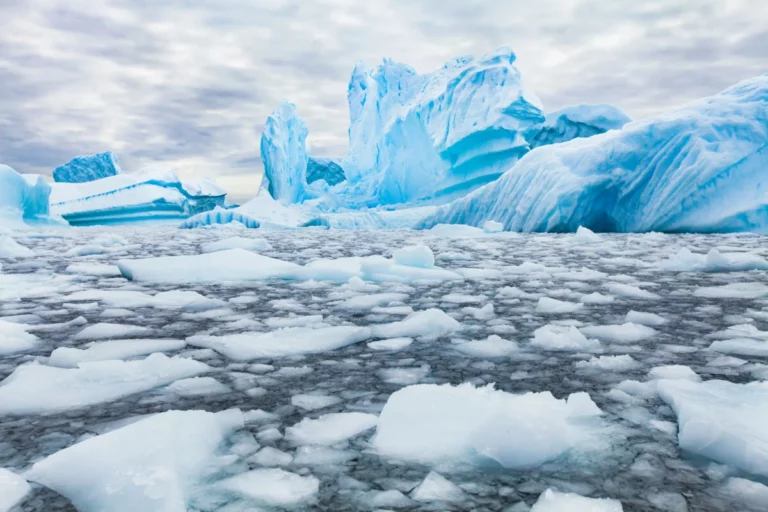If you’ve ever wondered about the fascinating science behind the process of ice melting, you’re in the right place.
When the temperature rises around a piece of ice, the ice’s temperature goes up with it. However, when the ice reaches its melting point, it becomes liquid water, and its temperature stays constant. The ice melting point is 0 degrees Celsius (32 degrees Fahrenheit).
Below you will find out more knowledge about it.
Factors Affecting the Melting Point of Ice
Pressure: It has a significant impact on the melting point of ice. At higher pressures, such as those found deep within Earth’s crust or under the weight of a glacier, ice can melt at temperatures below 0°C. Conversely, at lower pressures, ice will have a higher melting point.
Impurities: The presence of impurities in ice can depress its melting point. This is due to a phenomenon known as freezing point depression or colligative properties. When impurities, such as salt or other solutes, are added to ice, they disrupt the regular crystal lattice structure of ice, making it easier to melt at a lower temperature.
Heating Rate: Rapid heating may cause the ice to melt at a slightly lower temperature than slow and gradual heating. This is because fast can create localized areas of higher temperature within the ice, facilitating the transition from a solid to a liquid state.
Isotopic Composition: The isotopic composition of the water can also influence. As well as Ice made from water with different ratios of hydrogen and oxygen isotopes may have slightly different melting points.
Surface Conditions: For example, rough or uneven surfaces may have localized areas with lower melting points, which can cause them to melt more readily in those areas.
Atmospheric Conditions: If the atmospheric pressure is higher or lower than standard pressure, it can lead it to melt at slightly different temperatures.
The Malevolence of Ice Melt: Understanding its Dark Side

While ice melt proves beneficial in combating icy inconveniences, it carries a shadow of drawbacks and concerns that demand our attention and responsible use.
Hardscaping Hazards:
- The very presence of ice can spell trouble for your outdoor spaces, with water infiltrating cracks in hardscaping only to freeze and expand during cold spells, contributing to structural degradation.
- Ice melt compounds, often salt-based, exhibit a paradox: while saltwater takes longer to freeze, it expands by a staggering 40% upon freezing. This property, when coupled with cold temperatures, can exert significant stress on sidewalks and patios.
Automotive Agony:
- The woes extend to vehicles, where salt residue from road-grade ice melt exacts a toll on your car’s paint, setting the stage for corrosion and rust.
- This corrosion can extend its grasp to critical components such as brake lines, compromising safety. An effective preemptive measure involves undercoating your vehicle with oil in the prelude to winter’s icy grip.
Familial and Furry Concerns:
- The well-being of family and pets becomes a focal point, as some ice melt formulations manifest toxicity and irritancy, posing the risk of chemical burns and gastrointestinal distress.
- Even seemingly innocuous rock salt, if misused, can irritate your pet’s paws and, when consumed excessively, induce digestive complications. A vigilant eye on its ingredients and prudent application is indispensable.
Environmental Imperatives:
- The grand scale of its usage in the United States, approximately 24 million tons annually, ushers in environmental considerations that must not be overlooked.
- Chemical components from deicing agents, notably chloride, can infiltrate runoff, soil, and groundwater, imperiling ecosystems. Furthermore, exuberant its application can adversely affect plant life and flower beds.
Historical Insights:
- A curious historical perspective emerges harking back to ancient conquerors such as the Romans. They wielded salt not as a tool for salvation but as a weapon to render conquered lands barren and infertile.
Diverse Forms of Ice Melt: Tailoring Solutions to Environmental Needs
Different types of ice melt exhibit varying performance attributes, each suited to specific scenarios.
Solid vs. Liquid Ice Melt:
- Solid ice melt exemplified by rock salt, is a familiar choice, often used on pre-existing snow and ice. Its mode of action involves absorbing moisture to create a brine, which gradually penetrates downward, melting the ice while weakening the bonds between the ice and the ground. However, solid efficacy can wane in extreme cold due to its dependency on moisture.
- On the other hand Liquid ice melt is pre-formulated in brine form, ready to act as a preemptive measure against snow and ice buildup. Unlike its solid counterpart, its melt remains effective in colder temperatures, making it an optimal choice for preventing rather than responding to ice accumulation. Application methods can range from handheld sprayers to large tanker trucks, depending on the scale of the operation.
Exothermic vs. Endothermic Deicers:
- The classification of deicers into exothermic and endothermic varieties hinges on their heat-releasing or heat-absorbing properties.
- Exothermic deicers exemplified by magnesium chloride and calcium chloride, exude heat when in contact with it, resulting in rapid ice melting. They excel in frigid conditions where immediate action is essential.
- Endothermic deicers typified by rock salt (sodium chloride), necessitate drawing heat from their surroundings to initiate the dissolving process. This method tends to be slower, especially in icy conditions with minimal available moisture.
Wide-reaching Applications of Ice Melting Knowledge

Weather and Climate Science:
- Its points are used by meteorologists to predict when snow and ice will melt, an important forecast for transportation and public safety.
- For climate models to accurately forecast the effects of climate change, like the melting of polar ice caps, it is essential to comprehend how it functions and freezes.
Engineering and Materials Science:
- Engineers use their understanding of ice behavior to create structures that can resist freezing and thawing cycles without being damaged.
- It is necessary to understand it in order to select de-icing technologies and materials to maintain roads safely during the winter.
Food and Beverage Industry:
- The freezing and melting properties are vital in food preservation techniques such as freezing and thawing, ensuring food remains safe and maintains its quality.
- In the beverage industry controlling it is crucial for producing drinks at the desired temperature and consistency.
Environmental Science:
- Observing changes in ice melting points, such as the earlier thawing of ice in polar regions, is a critical indicator of global climate change.
- Understanding it from glaciers and polar regions is essential for predicting sea-level rise and its impact on coastal areas.
Chemistry and Material Science:
- Scientists use ice melting point data to understand the behavior of different materials under various temperature conditions.
- Knowledge of it point is important in chemical processes and reactions that involve temperature control.
Recreation and Sports:
- Ice melting point data is crucial for managing and maintaining ice rinks for sports such as ice hockey and figure skating.
- Ski resorts use information on their points to manage snow quality and safety on the slopes.
Energy Production:
- In regions with cold climates, power plants use the melting point of ice to manage the freezing of water in cooling systems and prevent damage.
Environmental Conservation:
- Understanding ice melting points aids researchers in studying and conserving fragile ecosystems in polar regions affected by climate change
FAQs
Why does ice melt at 0 degrees Celsius?
Ice melts at 0 degrees Celsius because that’s its melting point, the temperature at which it transitions from a solid to a liquid state.
Can ice melt below 0?
Yes, Ice can melt below 0 degrees Celsius, but it requires external energy or substances like salt to lower the melting point.
Will snow melt at 4 degrees Celsius?
Yes, snow will typically start melting at 4 degrees Celsius since it’s above the freezing point of 0 degrees Celsius.
Can ice melt in 30-degree weather?
Yes, Ice will indeed melt in 30-degree weather, as this temperature is well above its melting point of 0 degrees Celsius.
Will ice melt at 1 degree?
Yes, Ice will start to melt at 1 degree Celsius since it’s above its melting point.
When 1 kg of ice at 0 degrees Celsius is completely melted?
When 1 kg of ice at 0 degrees Celsius is exposed to temperatures above 0 degrees Celsius and absorbs sufficient heat energy, it will completely melt, transitioning into 1 kg of liquid water at 0 degrees Celsius.
Final Words
The temperature at which ice melts is a fundamental concept with wide-ranging implications across various scientific, practical, and environmental domains. Ice, transitioning from a solid to a liquid state, melts at its melting point, which is 0 degrees Celsius or 32 degrees Fahrenheit.
Moreover, this fundamental understanding of ice melting is crucial for weather prediction, climate modeling, engineering design, road maintenance, food preservation, and a multitude of other applications.
Additionally, it forms the basis for addressing challenges related to weather, materials, food production, environmental conservation, and more, emphasizing the vital role that a simple but fundamental concept can play in our daily lives and the broader world.

